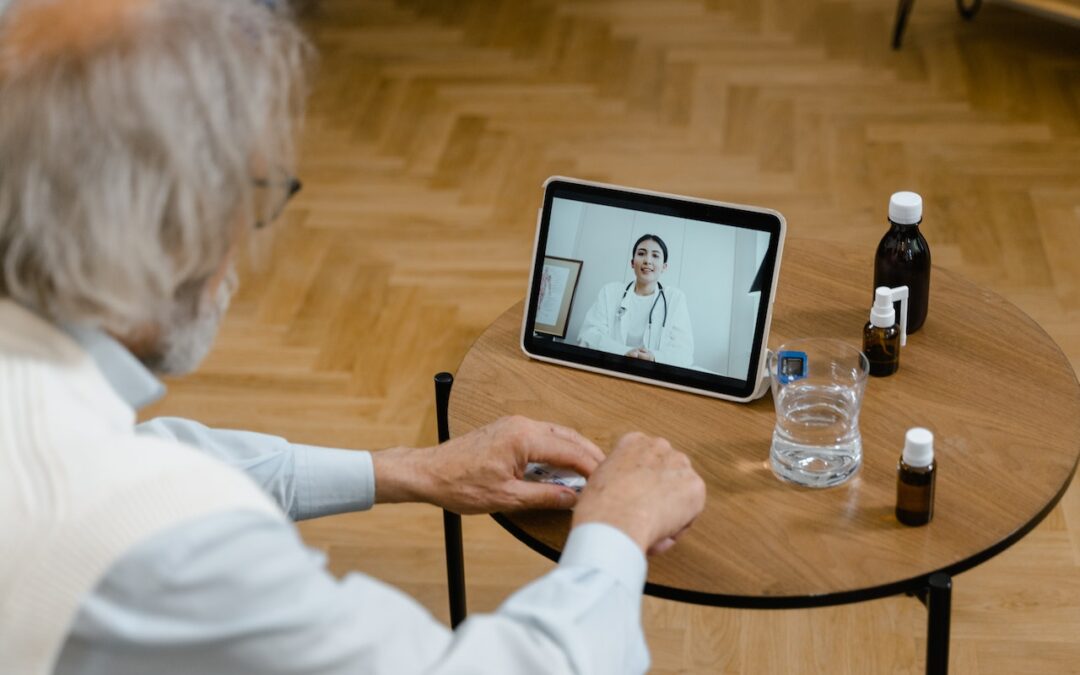The mental health landscape has changed significantly over the last couple of decades. Indeed, there is a greater recognition of how vital mental wellness is in people’s lives. Yet, it is clear that there remain challenges in ensuring those who need care can meaningfully connect to resources. Telehealth is one of the potential solutions that has become more practical of late. A growing number of professionals are offering consultations and therapy in virtual spaces. All that many patients need to use these services is a smartphone, stable internet access, and a private room. Let’s explore how telehealth can help individuals with mental health disorders stay connected and get the care they deserve.
Improving Access to Mental Health Services
Various challenges surround how individuals with mental health disorders navigate the care system. Some of the most significant are related to the ability to access care meaningfully and consistently. In the U.S., 1 in 5 adults reports unmet mental health needs. Financial obstacles, travel hurdles, and other practical elements can mean those needing help cannot get it. Telehealth can be a valuable solution here.
In some instances, telehealth therapy is more affordable. There’s a growing marketplace of professionals operating in virtual settings, reducing their overheads and how much they charge patients. Not to mention that an increasing number of insurance providers are including telehealth options in plans. This can make the financial hurdles less of an issue.
The Newfound Benefits of Telehealth
One clear benefit of telehealth is that it reduces the distance between doctors and patients.
People living in underserved areas or those with busy family lives don’t have to travel long to get care. They can speak to their therapist or psychiatrist from home, or even their car. This can mean they can keep consistent connections with professionals that make a genuine difference.
Mitigating Isolation
Isolation is a growing mental health concern at the moment. Loneliness appears to be on the rise, with reports revealing that 30% of American millennials feel lonely all or most of the time.
In some cases, isolation can trigger emotional or psychological symptoms. Loneliness may also be a symptom of depression or anxiety, exacerbated by reduced connections to the outside world.
At the moment, there can be a tendency for some people experiencing the mental health elements of isolation to take to social media platforms to address this. It’s important to consider that alongside the positives of community engagement, social media use can have mentally unhealthy effects.
Some people may feel worse about themselves due to exposure to harmful content or cyberbullying behavior. Indeed, the trend for self-diagnosis on social media may delay people from getting the professional and accurate assistance they need.
Telehealth services are a bridging tool here. Video calls mean people can connect to experienced professionals who care, even when patients don’t feel up to socializing. Virtual therapists can also guide patients through safely mitigating isolation, including utilizing social media healthily and mindfully.
Telehealth Helps Individuals With Mental Health Disorders Stay Connected
Meeting Individual Needs
While some common symptoms and conditions are related to mental unwellness, not everybody experiences it similarly. This means that a single, in-person approach to treatment or counseling is only sometimes practical for some. Telehealth can help better tailor options to meet patients’ needs and preferences. This can keep them connected to effective treatment plans.
Telehealth certainly seems to be a preference for many patients. Studies show that telehealth uptake for mental health treatment rose during the pandemic and remains high. This is unlikely just an indicator that more people are committing to their mental wellness. Instead, the flexibility and comfort offered by holding therapy or appointments in the space of the patient’s choosing are more conducive to a range of lifestyles.
This may be particularly relevant for patients who find it difficult to leave the house, either due to mobility restrictions or because they find unfamiliar environments overwhelming. Those living with neurodivergent traits, for instance, can utilize telehealth treatment services without introducing additional stressful stimuli that might otherwise discourage their continued care. Instead, they can keep their supportive resources around them at home while being empowered to take control of their treatment plan.
Providing Support
Support from friends and family is essential to any mental health treatment plan. However, there’s a difference between the support provided by loved ones and that available in specific therapeutic settings. Telehealth can help patients access these resources in line with their needs.
Telehealth counseling allows patients to talk more openly about their concerns in ways that they wouldn’t with friends and family. Even relationships with close loved ones can still be subject to baggage, making it difficult to broach certain subjects. On the other hand, Telehealth therapy services are on call in many cases as and when the patient needs them. They can, therefore, discuss sensitive and personal matters with confidence.
This extends to peer mental health support groups, too.
Some telemedical mental health services are starting to offer group sessions via teleconferencing software. Such resources help patients to share their experiences and gain the insights of others in a comfortable environment. It can also provide opportunities for individuals to make connections with those going through similar experiences. This is important because peers will often understand mental wellness challenges in ways that friends, family, and even medical professionals don’t.
[Related: Is US Healthcare Ready for the Mental Health Crisis That Will Follow COVID-19?]Conclusion
Telehealth is becoming more accessible and popular for individuals with mental health disorders. The virtual nature of appointments helps overcome access obstacles and reduces the exacerbating influence of isolation. Telehealth often helps tailor care to patient’s needs and provides more relevant support. It is vital to ensure that patients continue to be able to utilize what is likely to become an essential tool in mental health care.
| Image Source: Pexels |




